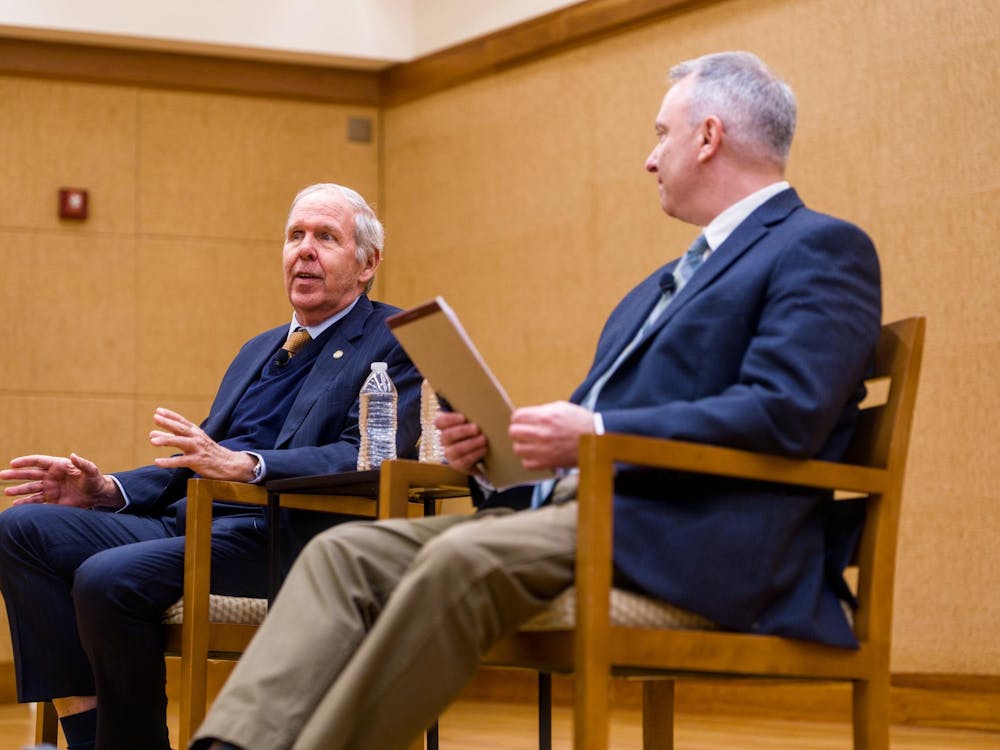With the creation of new financial aid programs at both Virginia Tech and William and Mary joining the University's AccessUVa, many Virginia schools and schools across the nation are developing a new approach to financial aid designed to assist student need in higher education.
Virginia Tech President Charles W. Steger announced the creation of a new financial aid program at the school called "Funds for the Future" at a special meeting of the Virginia Tech Board of Visitors last weekend.
Earlier this month, William & Mary officials announced a similar financial aid initiative called "The Gateway." Both of these programs come on the heels of numerous new financial aid programs springing up around the country, including AccessUVa at the University, according to University Student Financial Services Director Yvonne B. Hubbard.
While Hubbard noted that the rapid succession of financial aid programs introduced over the past year may suggest that schools are competing for students, in the end they all have the same goal.
"Every student that gets in here should afford to be here," Hubbard said.
The Higher Education Restructuring Act also motivated the Virginia schools to create more financial aid programs, Hubbard said.
"The state has a goal under restructuring that if you have control over your tuition, then the students who need help should get help," she said.
To that end, the officials from Virginia Tech and William & Mary consulted with those from the University in creating their financial aid programs, Hubbard said.
Out of the three big programs introduced in the Commonwealth over the past year, Hubbard said she thinks AccessUVa is the most comprehensive. AccessUVa is a multi-component program which proposes to meet 100 percent of student need through grants for low income students and loans, capped at $18,000, for middle-income students. There also is a financial-education component aimed at teaching University students about the importance of their credit rating that will be further implemented over the course of the next two years, Hubbard said.
The money for these programs comes from a combination of federal and state funding as well as the endowment and institutional funds allocated by the Board of Visitors and University President John T. Casteen III, according to Hubbard.
"This is [Casteen's] brainchild," Hubbard said. "[Casteen] is very committed to it, as are the Board of Visitors."
Virginia Tech, however, is in a slightly different financial situation, according to Virginia Tech's Vice Provost of Academic Affairs, David Ford.
"It would be wonderful if we could meet 100 percent of the need of our students who are in [the low] income category, and some day we hope to be able to do that," Ford said. "But right now we don't have the funds to do that. Tech has more students enrolled [than U.Va.]. When you're talking numbers, we have a much higher population to take care of and fewer dollars to do that."
As a result, Virginia Tech only is committing to protect low-income students from the increases in tuition that occur during the four or five years they are in college, Ford said.
William & Mary officials, on the other hand, are targeting student loans with their financial aid program, according to William & Mary Director of Financial Aid Ed Irish.
"We hope to be able to eliminate the need to take loans for students in the income group of less then $40,000 for Virginia residents," Irish said.
While each of the three schools is taking different approaches to provide low-income access, Irish, Ford and Hubbard all agreed they are facing the same problem.
"Across the country, the number of low-income students going to college has declined, and middle-class students are terrified that they won't be able to pay for college, so they aren't even going to college," Hubbard said.






